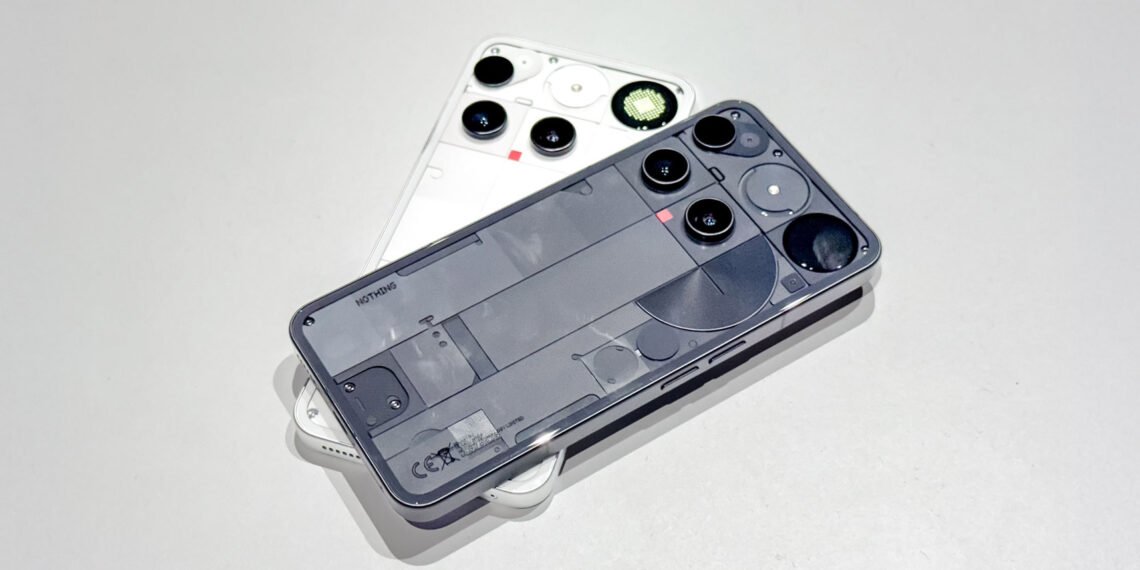The year 2021 has been full of excitement in the world of technology, especially when it comes to Android phones. While big names like Samsung and Google usually dominate the conversation, this year, there is a new player on the scene that is stealing the show. And the best part? It’s not a big corporation, but a smaller and more innovative company.
Nothing flagship phone is its most riskiest and costly item yet. The Nothing Phone 3 is no longer affordable by comparison to its midrange rivals, with the starting price of $799. Rather, the handset challenges rivals such as the iPhone Pro, Pixel Pro, and Galaxy S smartphones of planet earth in both design and appeal in their striking looks, useful AI capabilities, and that touch of software.
Also, I tried the first over-ear headphones of Nothing, and they rendered my AirPods Max dull
- Emergence of a New Player in Android Phones: In 2021, a smaller, innovative company introduced the Nothing Phone 3, challenging big brands like Samsung and Google with its striking design and AI capabilities.
- Nothing Phone 3’s Pricing and Market Positioning: Priced at $799, the Nothing Phone 3 aims to compete with high-end flagship phones such as the iPhone Pro and Galaxy S series, offering a unique design and software features.
- Design and Interface Innovations: The Phone 3 replaces the iconic Glyph Lights with a more subtle Glyph Matrix interface managed by a physical Glyph Button, enhancing functionality and user control.
- Technical Specifications and Features: Powered by a Snapdragon 8s Gen 4 and a 6.67-inch LTPS AMOLED display, the iPhone 3 includes three 50MP cameras, a 5,150mAh battery, and promises five years of Android updates.
- Unique Software and AI Features: The device introduces AI-driven features like Essential Space and Flip to Record, along with a unified Glyph Matrix for notifications and utilities, enhancing the user experience.
And it does so at the cost of losing its most recognisable element, the Glyph Lights, now obsolete in favour of a less ostentatious and more original Glyph Matrix interface. There will be more about that presently.
I tried the iPhone 3 in person during the Nothing launch event in London, and here is why it is going to make some noise in an ever-increasing competitive market.
Making functional fun

Also, I tested Nothing’s first over-ear headphones, and they made my AirPods Max look boring.
And it does so while sacrificing its most iconic feature, the Glyph Lights, which have now been replaced by a more subtle and unique Glyph Matrix interface. More on that later.
I went hands-on with the Phone 3 at Nothing’s launch event in London, and here’s why it’s poised to make a splash in an ever-competitive market.
Putting the ‘fun’ in functionality

Being a tech nerd, I cannot miss seeing the multiple Nothing Phone 3 renders that leaked before the launch, and entered the hands-on session with degraded expectations. I had not much to expect out of the asymmetric design; however, the iPhone 3 gets better than I could have expected. Would I dare say I love it because it is weird?
The sense that it is on the more playful side could be attributed to the new Glyph Matrix on the back cover, which otherwise would have filled another slab phone, and I would say is more functional, depending on the user of the device, as compared to the Glyph Interface of the older models.
Others: Why I would buy this $280 Android phone instead of cheaper Samsung and Google stuff
It has a Glyph Matrix comprising 489 mini-LEDs that is managed by a physical Glyph Button on the rear. Switch between stopwatch and other utilities such as Glyph Mirror, ambient interactions such as battery indicator and clock, and games like Magic 8 Ball, and even turn off the LEDs to produce a subtler appearance completely.
A physical button to switch LEDs on and off and alternate between various functions is a wise decision – it is so wise that I would describe the Glyph Button to be the most significant addition to the design of Nothing this year. There have been incidents in the past where the Glyph Lights have been activated involuntarily in a common area, and I have had to contend with switching them off using the quick-setting tile. The new design saves me from doing that.
Also, there is a blinking red square under the transparent transparent the rear cover, which starts blinking when recording audio or when shooting a video. Ambient information: it is a pleasant touch.
Can this Android phone convert iPhone users?

At 799, the Nothing Phone 3 is a pricey offer, and I do not want to judge it yet. Phone 3, weighing 218 grams, is not the heaviest flagship phone. The sides are flat but curved at the corners and have the design of a sandwich with the glass, ergonomically easy to hold, with IP68 dust and water protection.
It is equipped with a 6.67-inch LTPS AMOLED, the refresh rate switches between 30Hz to 120Hz, not to 1Hz as of LTPO screens. The latter is also battery efficient, but the 5,150mAh battery should not be out of steam in less than a day. I did not manage to use the Nothing Phone 3 in the outdoor light, so I have no remarks on outdoor legibility at the moment.

Contrary to other flagships, the Nothing Phone 3 uses a Qualcomm Snapdragon 8s Gen 4 processor, lacking new Oryon CPU cores. On paper, it should pass with the same performance capabilities as the Snapdragon 8 Gen 3 chipset last year.
There are no statements that the decision to use 8s Gen 4 instead of the 2024 flagship SoC helped them dedicate to providing software support for longer times. Phone 3 has been promised five years of Android OS updates and seven years of security updates.
Also, A productivity game-changer is hiding in plain view: a free command line interface, Gemini.
The Nothing flagship is equipped with three 50MP cameras on the front and a 50MP selfie camera on the rear. It has a 1/1.3-inch main camera with a claim of taking lossless 35mm (1.5x) and 48mm (2x) shots, and a 114-degree ultrawide camera as well as a 3x optical-zoom capable periscope camera.

The Nothing Phone 3 has the TrueLens Engine 4, which is used to process photos 125% faster as compared to Phone 2. It is also used to enhance HDR performance, real-time segmentation of scenes, reduction of noise, and less jerky motions.
It has an Android 15-based Nothing OS and will receive Android 16 later this year. It has my favorite artificial intelligence addition, the Essential Space, where all that you record using the Essential Key is stored, plus other items. It also has a new feature named Flip to Record, where sound recordings are recorded and transcribed when the phone is turned face down.
My first impression of the Nothing Phone 3 goes on to suggest a decent handset at a US dollar seven ninety nine price point, even though it lacks the Snapdragon eighty-eight Elite. As my previous experience tells, I prefer the software tuning and animations of Nothing. As long as it can provide the same smooth software philosophy as the other products, in addition to enhancing the camera quality, the iPhone 3 will probably stand out against the best phones out there during the remaining part of 2025.






































Comments 1